‘We’re living in a world in agony,’ begins the opening address by Rebecca Lamarche-Vadel, chief curator of the second edition of the Riga International Biennial of Contemporary Art (RIBOCA2). Lamarche-Vadel is speaking in a disused port warehouse before an audience seated in carefully spaced chairs; her words, and their reverberation around the mammoth space (far from filled by virtue of the now all-too-familiar principle of social distancing), speak to the unusual context of RIBOCA2 – a biennial happening in the midst of a pandemic.
The biennial, which was originally due to open in May and run for five months, was initially conceived with the curatorial theme of ‘re-enchantment’. The intention was to reflect on the prospect of an impending cataclysm and on the need to rethink our place in the world: to create space for alternative voices and visions. A re-evaluation of our position and values – and, indeed, the question of who gets to take part in a contemporary art biennial – was from the off echoed in the diversity of RIBOCA2’s ‘participants’, a term intended to acknowledge that not all those with work in the biennial identify as artists. These include doctor Vija Eniņa, an expert in herbal medicine, who has seed-bombed the exhibition’s site with healing plants, and Erika ‘Aya’ Eiffel, a competitive archer and founder of the objectophile organisation Objectum-Sexuality Internationale, who is presenting a number of her ‘companions’, including a Japanese longbow and a model of a bridge. As Lamarche-Vadel notes in her opening address, the idea of expanding the borders of art in this way goes all the way back to Marcel Duchamp. The question might be posed: how radical, or simply future-oriented, could the adoption of a century-old artistic strategy really be? The true test of RIBOCA2’s commitment to openness and adaptability, in many ways, was the arrival of the Covid-19 pandemic.

Untitled (Arci, Ayaka, Eiffel) (2020), Erika Eiffel. Installation view at the 2nd Riga International Biennial of Contemporary Art, RIBOCA2, 2020. Photo: Hedi Jaansoo; courtesy the artist and Riga International Biennial of Contemporary Art
With Covid-19, an idea became reality: the anticipated potential collapse, and with it the end of this particular world, had actually arrived. The biennial’s executive director Anastasia Blokhina describes how, after putting preparations for RIBOCA2 on hold in March, the team understood that it ‘had to happen this year’. Rather than postponing it until the return of something resembling normality, the event would happen (albeit with a much shorter run of three weeks) within the new reality, with the biennial’s title, ‘and suddenly it all blossoms’, posing a question: what might blossom from the precarity and uncertainty of this era?
The exhibition – whose principal site is the vast, partially abandoned industrial port of Andrejsala, described by Lamarche-Vadel as ‘between a ruin and a renovation site’ – openly casts absence and adaptation as central themes. In DER HINTERGRUND SEI ICH, TIERE IM EIGENEN ANDEREN ZUSAMMENHANG MIT ARCHITEKTUR (‘the background be me, animals in their own different context with architecture’) by Heinz Frank, who died less than a week after RIBOCA2’s opening, photocopies take the place of original architectural drawings from the late 1970s to the early ’90s. The only object included from Dominika Olszowy’s installation Yawn of a Sleepy Heart (2020) is a single stained-glass window, with the rest instead being presented at Raster Gallery in Warsaw where Olszowy lives. And three out of four groups of plinths in Oliver Beer’s Simply Rights/Unattained Goals (2019–20), meant to bear items belonging to women in the artist’s family, stand empty.
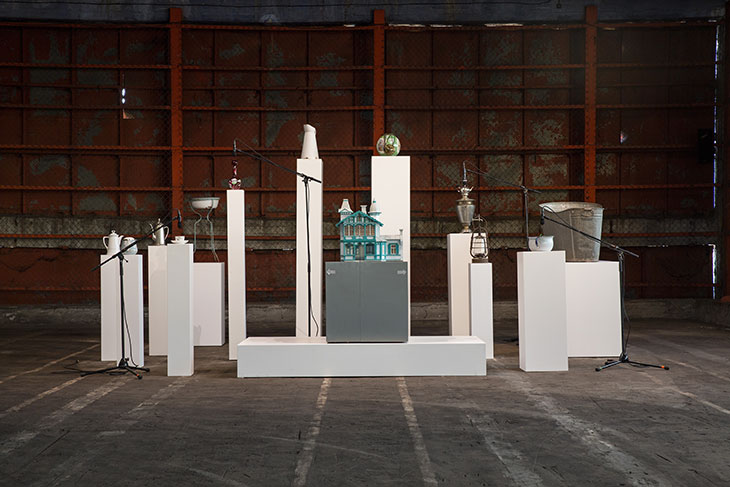
Simply Rights/Unattained Goals (Household Gods (Aspazija)) (2020), Oliver Beer. Installation view at the 2nd Riga International Biennial of Contemporary Art, RIBOCA2, 2020. Photo: Hedi Jaansoo. Courtesy the artist and Riga International Biennial of Contemporary Art
Other adaptations deftly play into RIBOCA2’s original mission to create space for alternative visions and voices by introducing community participation into their artistic concepts. Due to the impossibility of transporting Ugo Rondinone’s neon artwork life time (2019) from Switzerland, a new version was produced in pine by local artists in Riga, while Paweł Althamer’s Draftsmen’s Congress (2020), a white-walled room in which members of the public were supposed to create their own drawings and paintings during the exhibition’s opening, is populated instead via online contributions. In the exhibition guide, the unrealised plans for each artwork are not omitted, but simply crossed out. This is indicative of what participating artist Anastasia Sosunova – whose contribution consists of a series of sculptural interventions in an abandoned paintball field – describes to me as ‘acceptance of the empty places in the exhibition which were created by these obstacles and cancellations, and not trying to fill them’.
Practically speaking, the experience of the biennial for visitors is, necessarily, marked by the pandemic. After being welcomed by a hand sanitising station, visitors will notice both signs encouraging social distancing and disinfectant bottles around the space, particularly for works that require the use of headphones. A proportion of the public programme co-curated by Sofia Lemos, which includes masterclasses and talks, has moved online, while a collaboration with the local restaurant Casa Nostra, intended to explore the concept of ‘conviviality’, had to shift away from an original plan to seat guests at long communal tables. With RIBOCA2 only open for the final weeks of its intended run, the project will now find its longevity as a feature film directed by Dāvis Sīmanis, with the exhibition serving as a kind of elaborate movie set. ‘The film adds to the whole exhibition and could give it new reach,’ says participating artist Augustas Serapinas (whose original proposal for the biennial, which involved the reconstruction of snowmen, had to be reworked for a reason other than Covid: the lack of snowfall in one of the warmest Latvian winters on record). ‘It’s an unusual response to these unusual times.’
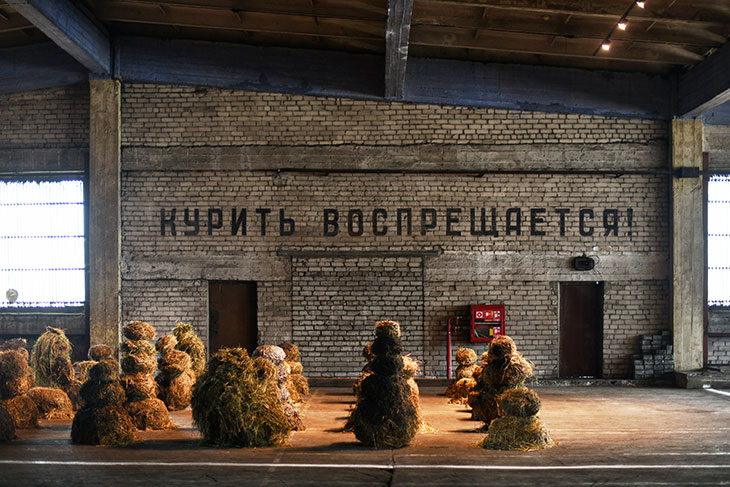
Mudmen (2020), Augustas Serapinas. Installation view at the 2nd Riga International Biennial of Contemporary Art, RIBOCA2, 2020. Photo: Louise Long. Courtesy the artist and Riga International Biennial of Contemporary Art
The resolve and ingenuity of the RIBOCA2 team in the face of a pandemic is typical of the general approach in a dynamic urban arts scene with big aspirations. Both Serapinas and Sosunova note the rich offering of art spaces and events in the Latvian capital, including Kim? Contemporary Art Centre and the Latvian Centre for Contemporary Art, along with the Baltic Triennial, Survival Kit and Cēsis Art Festival. Zuzeum, which houses the collection of the Zuzans family – the largest private collection of Latvian art in the world, comprising more than 20,000 pieces – is about to launch an ambitious exhibition of 21st-century international art. ‘People can’t cross borders right now, so we’re inviting them to experience the world through international art in Latvia,’ explains Zuzuem curator Ieva Zībārte.
Serapinas, hailing from neighbouring Lithuania, believes that RIBOCA has given a ‘boost to the local art scene and artists from the wider Baltic region’; the Biennial’s reinvention will doubtless provide an equally valuable education in what it means to ‘pivot’ (one of the principal watchwords of this pandemic) as an arts institution.
The 2nd Riga International Biennial of Contemporary Art, ‘and suddenly it all blossoms’, takes place 20 August–13 September.
Unlimited access from just $16 every 3 months
Subscribe to get unlimited and exclusive access to the top art stories, interviews and exhibition reviews.


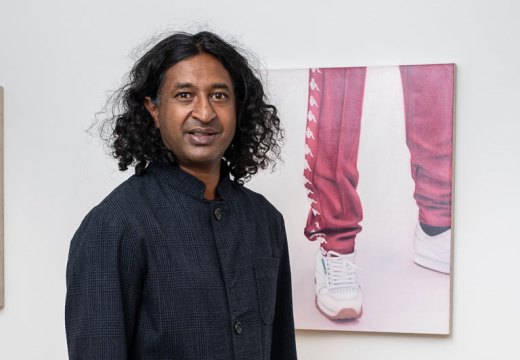
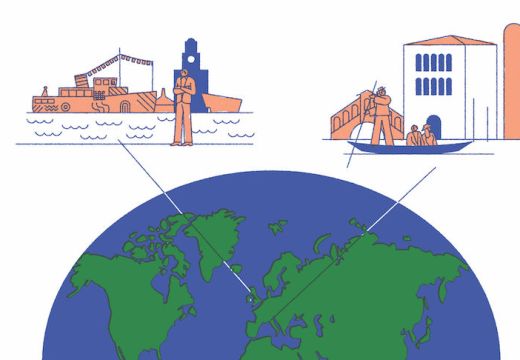
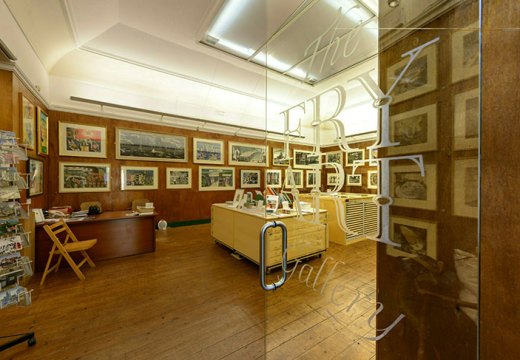









![Masterpiece [Re]discovery 2022. Photo: Ben Fisher Photography, courtesy of Masterpiece London](http://www.apollo-magazine.com/wp-content/uploads/2022/07/MPL2022_4263.jpg)
It’s time for the government of London to return to its rightful home